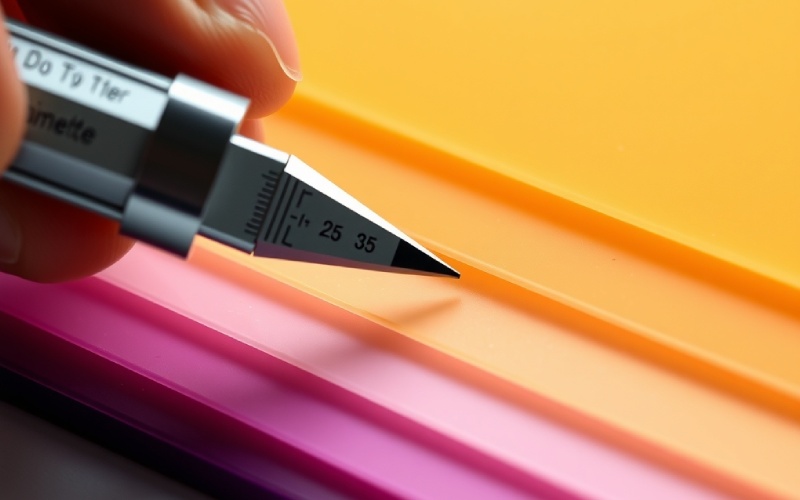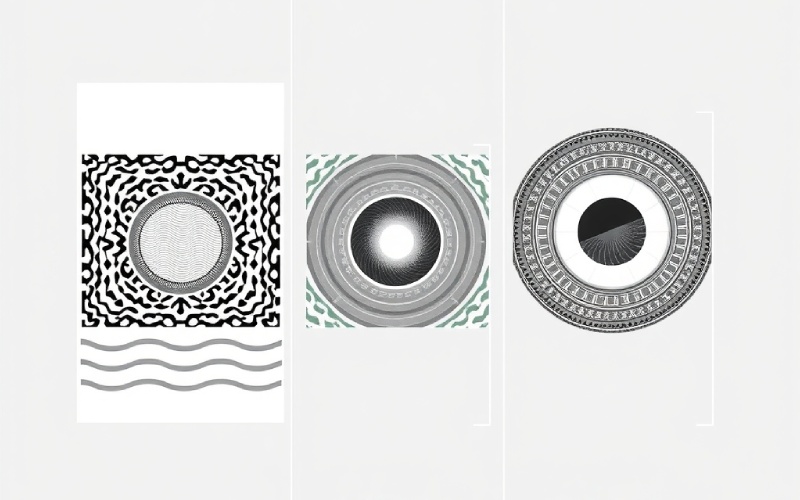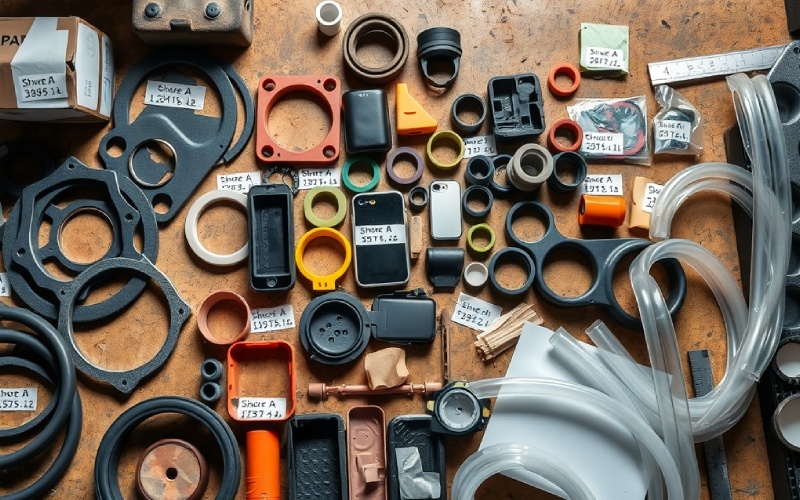Lasciate che Istar vi aiuti a iniziare il vostro progetto con la nostra esperienza e il nostro know-how!
Caricate i file del vostro progetto e i requisiti di produzione e vi risponderemo entro 30 minuti!

Small details can be very important. One of these small details is something we call Shore A hardness. You might be asking, “What is that?” Stay with me, and I’ll explain. Knowing about the Shore A hardness scale can help you know if a product will work well or fail. In this post, I will explain everything you should know about the Shore A hardness scale. We will talk about what it is and how people use it. We will also cover why it is such an important thing to know for anyone who works with certain kinds of materials. This article is worth reading if you are making a new product or are just curious about the things around you.
Let’s begin with the simple facts. The Shore A hardness scale is a system used to find out the hardness of a material. It tells us how well a material can resist being pushed into. You can think of it this way: if you push your finger into a soft piece of rubber, your finger makes a dent. The Shore A hardness scale gives a number to show how deep that dent is. This is a very helpful way to measure for softer materials that can bend.
The scale goes from 0 all the way to 100. A smaller number tells you the material is softer. A bigger number tells you it is harder. For example, a material with a Shore A hardness of 20 is very soft and can bend easily, like a rubber band. But a material with a Shore A hardness of 90 is much harder. It is not as flexible, like a wheel on a shopping cart. This simple number gives everyone a shared way to talk about how hard a material is.
It is important to know that this is just one scale. There are others. You might also hear about the Shore D scale. That scale is used for plastics that are even harder. But for most soft rubbers and elastomers, the Shore A hardness scale is the one people use. A man named Albert Ferdinand Shore came up with this whole system for measuring way back in the 1920s. He made a special tool called a durometer to do the testing.
So, how do we find that number? The way to measure Shore A hardness is pretty simple. We use a tool known as a Shore A durometer. This is a tool you can hold in your hand. It has a small, dull pin on the end. This pin is pressed into the material that we are testing. The durometer then measures how deep the pin pushes into the material. This resistance to indentation gives us the Shore A hardness number.
If the pin does not go in very far, it means the material is harder, so it gets a higher number. If the pin sinks deep into the material, it means the material is soft, so it gets a lower number. The measurement is usually checked a few seconds after the pin is pushed in. This helps to get a steady number. For the best accuracy, it is a good idea to measure a few times in different places on the material. Then you can find the average of those numbers.
There are special rules, like ASTM D2240, that explain the right way to do this testing. This makes sure that the results are the same no matter who is doing the test. It allows people to compare the numbers. The condition of the material you are testing, like how thick it is, is also important. This set method is a big reason why the Shore A hardness scale is a tool we can trust.

Having a single, shared system like the Shore A hardness scale is extremely important for making and building things. Think about trying to explain how hard a rubber seal is without it. You might say it is “a little soft” or “pretty firm.” But what I think of as “soft” could be different from what you think. This scale removes the need to guess. It gives us a clear number that means the same thing to everyone.
This is very important for checking quality. When a factory makes thousands of the same part, they need to know that each one is made correctly. By using the Shore A durometer, they can quickly measure a material’s hardness. This makes sure it is the same every time. This helps make sure that the product will work the way it is supposed to.
It is also very important for people who design and build things. When they pick a material for a new application, they need to know its features. The Shore A hardness is a very important piece of information. It helps them look at different materials. They can then pick the one that is perfect for the job. It could be for a flexible seal or a strong wheel.
The Shore A hardness scale is mainly used to measure the hardness of a certain group of materials. We are talking about materials that are soft and can bend. These are mostly elastomers and rubbers. Think about the kinds of materials you can bend or stretch, and they will not break. Those are the best materials for Shore A hardness testing.
Here is a short list of common materials where this scale is used:
The main thing to remember is that the Shore A hardness scale is the number one measurement tool for materials that are soft, bendy, and feel like rubber. For materials that are very hard, like a helmet for construction workers, we would need to use a different scale. That scale is called the Shore D scale.
Sometimes, the easiest way to learn about an idea like the Shore A hardness scale is to see it in real life. Let’s look at some things you see every day and their usual Shore A hardness numbers. This will help you get a better idea of what these numbers really mean.
| Valore Shore A | Example of Material |
|---|---|
| 20 A | Rubber band |
| 30 A | Pencil eraser |
| 40 A | Inner tube of a tire |
| 55 A | Door seal |
| 70 A | Car tire tread |
| 80 A | Shoe heel |
| 90 Shore A | Shopping cart wheel |
| 95 A | Forklift solid tires |
You can see from this table that the Shore A hardness scale covers a big range of hardness. A soft, stretchy rubber band is on the low side of the scale. A hard, tough car tire is much higher on the scale. This just shows how helpful this method of measuring is. It can describe many different kinds of rubber and elastomer materials. Thinking about these common things can help you imagine a material’s hardness when you see its Shore A number.
I have talked about the Shore D scale a little bit, so let’s make the difference clear. The Shore A hardness scale is great for soft materials that can bend. The Shore D scale, on the other hand, is made for harder materials. Think about hard rubbers and plastics that don’t bend much. The durometer tool for the Shore D scale has a sharper pin that is more pointed, and it pushes with more force.
It is important to know that you cannot directly compare a number from the Shore A hardness scale with a number from the Shore D scale. A Shore A number of 95 is about the same as a Shore D number of 45. This is the area where the first scale stops being useful and the other scale starts to work better. For very hard plastics, the Shore D scale gives a better hardness measurement.
So, when you look at the details of a material, always look to see which scale was used. Using the Shore A scale on a very hard plastic will not give you a good number. In the same way, using the Shore D scale on a very soft rubber will not work well. Each scale is made for a certain job and a certain group of materials it is meant to measure.
This is a very important question. The right Shore A hardness for a certain application is all based on what you need the material to do. A lower Shore A hardness means the material will be more bendy. It can also soak up more shock. A higher number means the material is tougher and will not wear out as easily.
For example, let’s say you are making an O-ring to use as a seal where there is not a lot of pressure. You might want a softer material that has a lower Shore A hardness. This lets the O-ring squeeze into small spaces to make a good seal. But, if you need a seal for a job with high pressure, you would need a harder material. This means it needs a higher Shore A hardness. This will stop the seal from being forced out of its spot.
The place where the material will be used also matters. Will it be around chemicals? Will it be in very hot or cold places? These things can change what type of rubber or elastomer you pick. That choice will then have its own Shore A hardness. You have to find a balance between the need for the material to be flexible and the need for it to be strong for your specific use.
The Shore A hardness scale is a very handy tool, but it does not tell you everything. It is important to know what it can’t do. The hardness measurement it gives is a way to see how a material resists a dent. But it doesn’t tell you all of its other features.
For example, the Shore A hardness number won’t tell you about the material’s strength when you pull it. This is called tensile strength. It also won’t tell you how well it holds up against being scraped or rubbed. A material can be hard but break easily. Or it can be soft but very strong. These are other features that need to be tested in different ways.
Also, the way the testing is done can change the results. How thick the sample is, the temperature, and how long the tool is pushed can all change the final number. This is why it is so important to follow a set of rules like ASTM D2240. This helps to get results you can trust and compare. So, Shore A hardness is a key piece of information, but you should look at it with other details about the material.

The main tool for this work is the Shore A durometer. Sometimes it is called a shore durometer or just a durometer. They are usually small tools you can hold in your hand and are easy to use. They have a gauge with a needle or a screen that shows the hardness number. The part that does the actual work is a small pin that is pushed by a spring.
There are different kinds of durometers for the different Shore scales. The Shore A durometer has a pin with a special shape. It is a cone with a flat tip that is made for softer materials. The spring inside is also set to a certain amount of force. This shared design is what makes the Shore A hardness scale a measurement that can be used everywhere.
For tests that need to be very exact and the same every time, especially in a lab, the durometer can be put on a test stand. This makes sure that the force is put on the material in the same way every time. It also makes sure it is pushed at a perfect 90-degree angle. This gets rid of any small changes that might happen when someone does the test by hand.
In manufacturing, keeping the Shore A hardness the same is about controlling the recipe of the material and the way it is made. For a polymer like rubber, the hardness can be changed by changing what is mixed into it. This could mean adding more or less of certain chemicals that make it hard.
The process of vulcanization for rubber is a very important step where hardness can be controlled. This involves heating the rubber with sulfur. The heat level and the amount of time the material is heated can greatly change the final Shore A hardness.
Having the same manufacturing steps every time is very important. Doing regular testing with a Shore A durometer is a part of checking for quality. Samples are taken from the things being made and measured. This makes sure they are in the right range of hardness. This helps the customer get a product with the exact material hardness they need for their application.